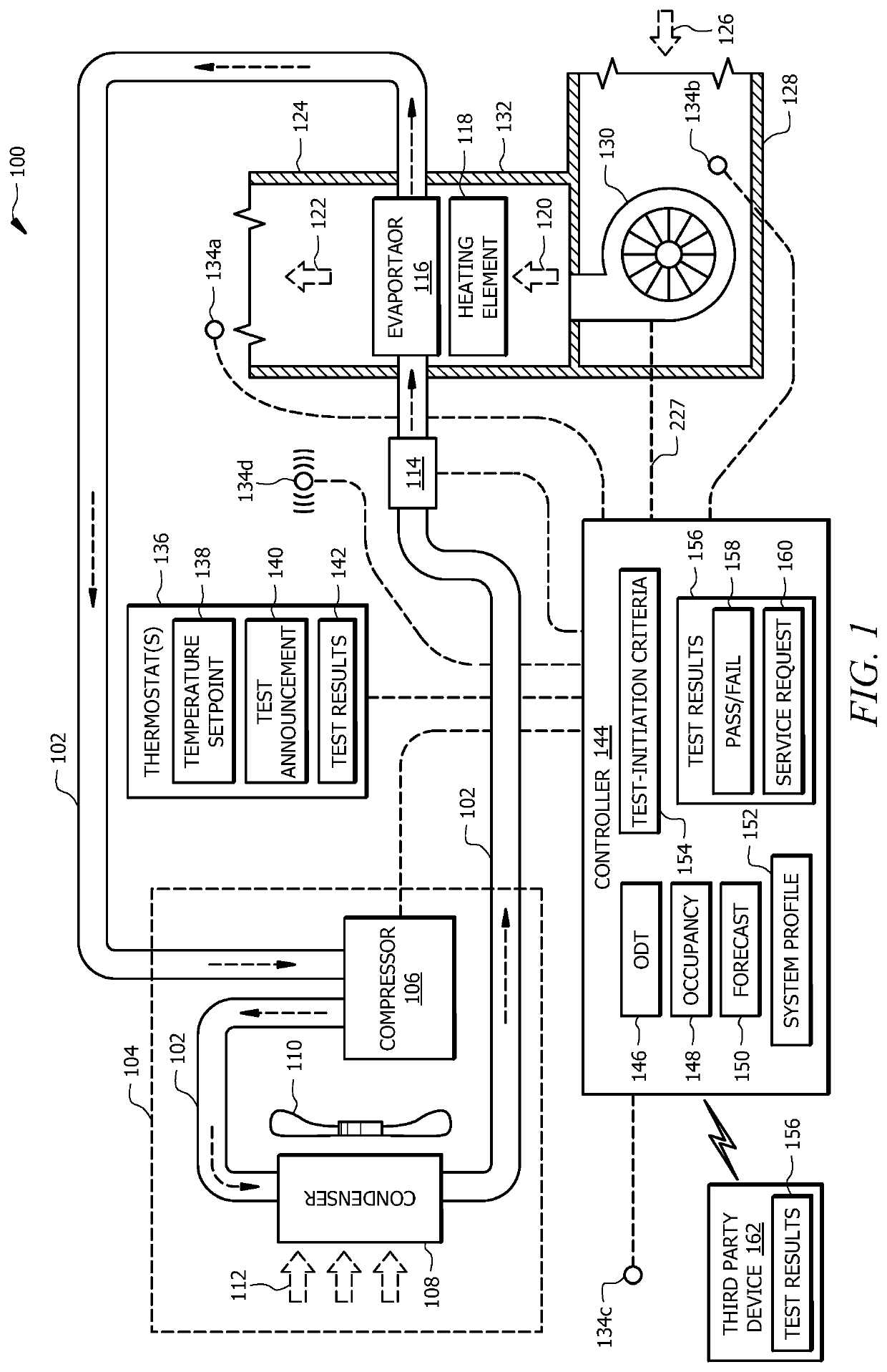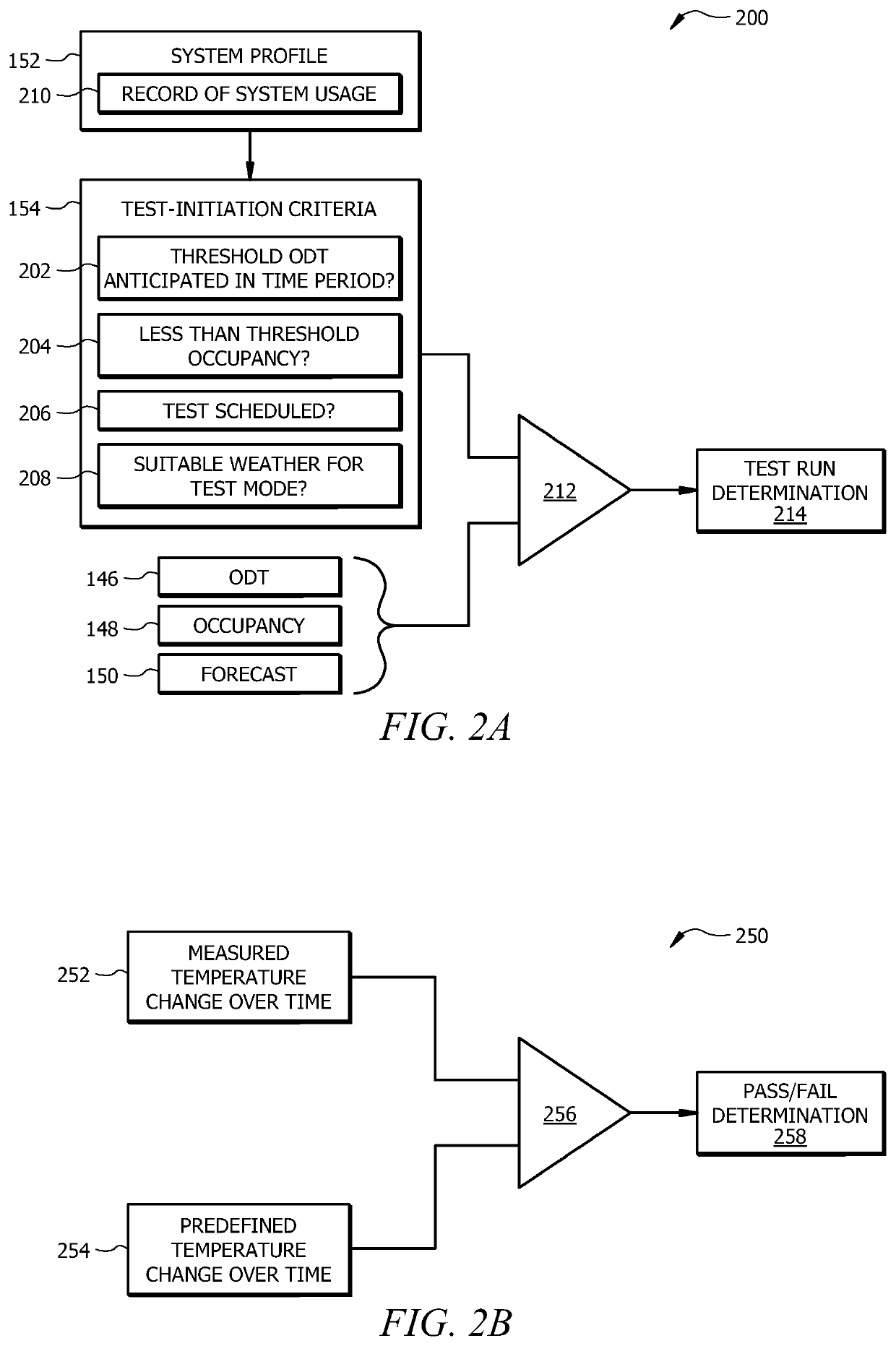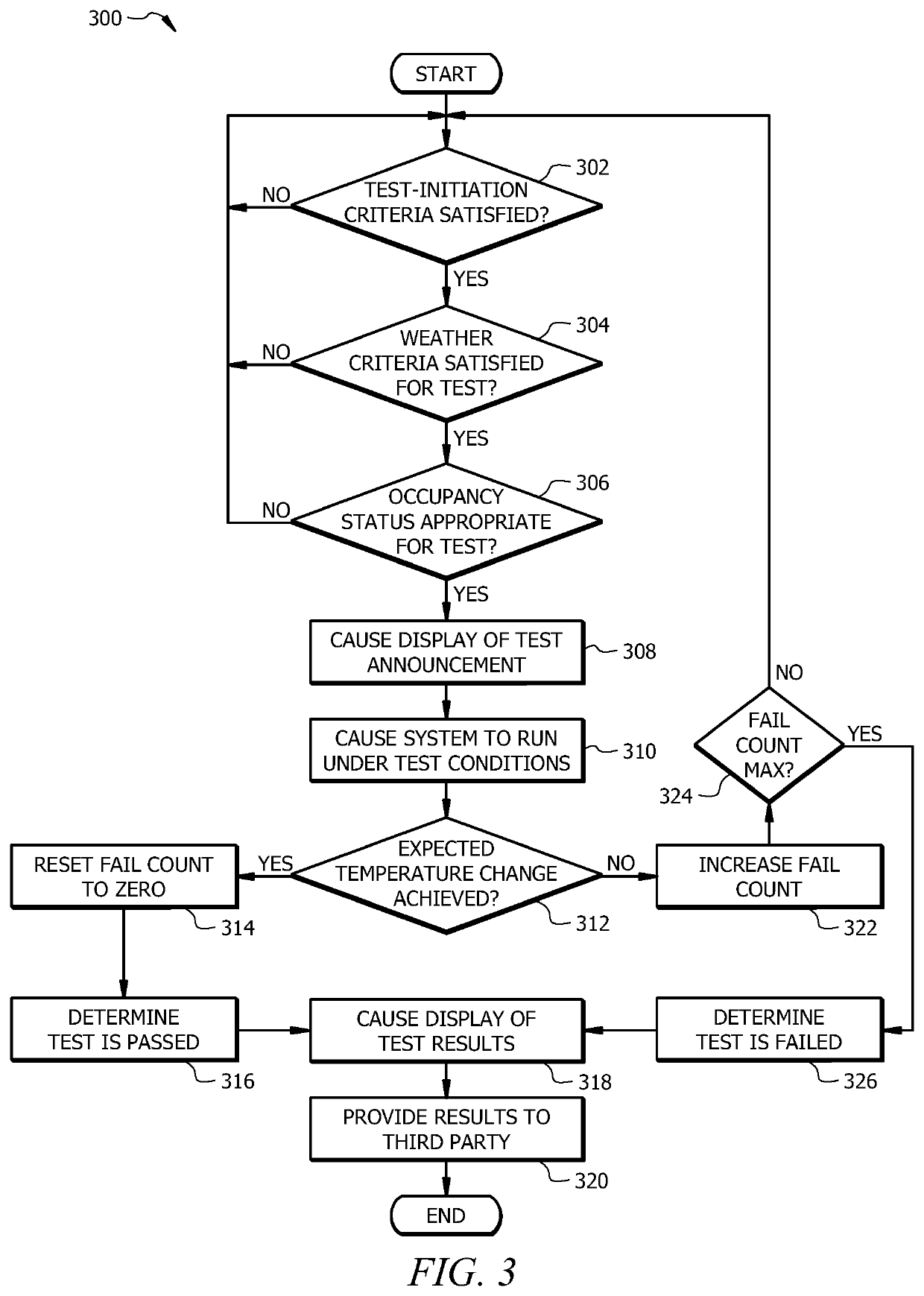HVAC system prognostics
a technology for hvac systems and prognostic models, applied in space heating and ventilation control systems, lighting and heating apparatuses, heating types, etc., can solve problems such as failure to provide desired cooling to a space, inability to provide heated air to the space, and inability to achieve desired heating and/or cooling. , to facilitate proactive reporting of test results, facilitate identification of faults, and prevent unwanted heating or cooling
- Summary
- Abstract
- Description
- Claims
- Application Information
AI Technical Summary
Benefits of technology
Problems solved by technology
Method used
Image
Examples
example method
of Operation
[0043]FIG. 3 is a flowchart illustrating an example method 300 of system prognostics for the HVAC system 100 illustrated in FIG. 1. Method 300 generally facilitates the detection of system faults associated with an operating mode that is anticipated to be needed in the relatively near future for the HVAC system 100. For instance, method 300 facilitates testing of heating mode when the HVAC system is currently operated in a cooling mode (and vice versa). The method 300 may begin at step 302 where the controller 144 determines whether test-initiation criteria 154 are satisfied for the HVAC system 100. The test-initiation criteria 154 generally correspond to an anticipated future need for operation of the HVAC system 100 in an alternative mode (e.g., a cooling mode if the system 100 is currently operated in the heating mode, and vice versa) within a predefined time interval (e.g., about three weeks or so). For instance, for testing cooling mode operation, the test-criteria ...
example controller
[0054]FIG. 4 is a schematic diagram of an embodiment of the controller 144. The controller 144 includes a processor 402, a memory 404, and an input / output (I / O) interface 406.
[0055]The processor 402 includes one or more processors operably coupled to the memory 404. The processor 402 is any electronic circuitry including, but not limited to, state machines, one or more central processing unit (CPU) chips, logic units, cores (e.g. a multi-core processor), field-programmable gate array (FPGAs), application specific integrated circuits (ASICs), or digital signal processors (DSPs) that communicatively couples to memory 404 and controls the operation of HVAC system 100. The processor 402 may be a programmable logic device, a microcontroller, a microprocessor, or any suitable combination of the preceding. The processor 402 is communicatively coupled to and in signal communication with the memory 404. The one or more processors are configured to process data and may be implemented in hardw...
PUM
 Login to View More
Login to View More Abstract
Description
Claims
Application Information
 Login to View More
Login to View More - R&D
- Intellectual Property
- Life Sciences
- Materials
- Tech Scout
- Unparalleled Data Quality
- Higher Quality Content
- 60% Fewer Hallucinations
Browse by: Latest US Patents, China's latest patents, Technical Efficacy Thesaurus, Application Domain, Technology Topic, Popular Technical Reports.
© 2025 PatSnap. All rights reserved.Legal|Privacy policy|Modern Slavery Act Transparency Statement|Sitemap|About US| Contact US: help@patsnap.com



